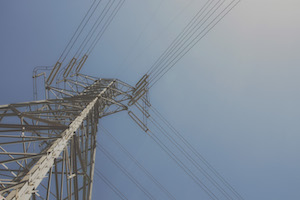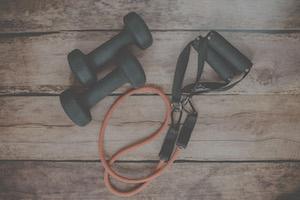'A vicious cycle'
Pet owners looking to get veterinary care or checkups for their dog or cat may find long wait times at the veterinary clinic. Scheduling new appointments at some clinics can take multiple weeks, and some clinics have gone appointment-only.
Veterinarians and clinic managers around the region said these conditions are reflective of larger systemic problems in the field of veterinary care, many of which stem from the COVID-19 pandemic.
Bedonna Erdlen, practice manager at Cranberry Veterinary Hospital, said that COVID-19 has changed the veterinary care industry drastically.
“I've been in the industry for 14 years, and I've never seen it like this,” Erdlen said. “The demand for staff, the demand for veterinary care, it's definitely different than it was even five years ago.”
Lots of new patients
Erdlen explained the issue comes from a number of sources. Many families adopted pets over the pandemic last year, and the increased numbers of new “COVID pets” combined with staff shortages make for a less streamlined process for clients.
“I would say that a lot of practices in the area are experiencing the same types of things,” she said. “A lot of patients that need seen, and just not enough time to get all those patients in.”
Clients at vet clinics don't always realize how busy things are, especially when they haven't had to wait for appointments in the past, she said.
“I think that where the stress is coming from is that people want their pet seen, and everybody wants their pet seen right now,” she said. “I think we're all kind of doing our best to accommodate that and give everyone the best advice and care, and I guess people don't understand that, or don't see what it's like behind the scenes.”
Erdlen said that vets and other employees at animal clinics often skip lunches and breaks to make sure that animals are seen and cared for, especially in emergencies, and that even that is not always enough.
“Say we have five emergency appointments here and no one's getting a lunch or break, and that sixth person calls,” she said. “They don't understand that we can't physically see them.”
Staff burnout
Dr. Richard Skalos, owner at Windrose Animal Hospital, says a widespread shortage of staff is a big reason for stress among veterinarians.
“It's a multipronged issue, to be honest,” he said. “We have a systemic problem, which is not something that can be readily fixed.”
Like many other services that were considered essential during the pandemic, many people working in veterinary medicine experienced burnout. But vets already had been dealing with stressful jobs: Veterinary medicine is considered to be in the top professions in America for suicide rates, Skalos said.
“We have a mass exodus from the top down,” he said, citing high student debt rates and heavy workloads as factors leading to a vicious cycle of stress.
“This was already occurring pre-pandemic, and you throw in all the extra clients and additional pets, and we have nobody able to accommodate the influx. And you have more burned-out doctors and support staff leaving in droves.”
Vets make a lot less money than doctors who work with humans, he said, but still go through medical school.
“(Other doctors) are making three times the amount we make coming out of the school, yet we do everything that they do,” Skalos said. “People sometimes say, 'This is not worth it,' and they leave the field.”
All hands on deck
Being able to hire additional veterinarians can make all the difference for vet clinics. Dr. Jaime Griffin, medical director at Seven Fields Veterinary Hospital, said conditions at her clinic improved with the hiring of two new vets.
“Hiring two veterinarians means (filling) two veterinarians' worth of appointments every day,” she said. “The fact that we could fill appointments for two vets is huge. But we're still pretty booked, and some days, even, we have a few overbooked. It's just not as bad as it was before, but we're unique in that we were able to do that.”
Earlier in the pandemic, Griffin said, things were a lot busier, especially because picking patients up curbside from clients' cars due to COVID-19 restrictions took up a lot of extra time. The end of curbside service in June helped to ease that pressure, she said.
“Especially when we were doing curbside, (clients) were waiting a much longer time, but they were pretty understanding,” she said. “They were just happy we were open.”
Asking for understanding
Erdlen says that most veterinarians in the industry are “compassionate about what they do.”
“There's this misconception that veterinarians are out for the money,” she said. “To start a career as highly demanding as veterinary medicine is now, where you pour your heart and soul into it, and then you have people who say, 'They're in it for the money and they don't care about my pet,' it hits us really hard because it's so far from the truth.”
Skalos said that one thing that pet owners can do to make the situation easier in the short term is to “be preventative.”
“If Fluffy starts to have issues, get in sooner rather than later instead of waiting for Fluffy to get super sick,” he said. “Don't assume (appointments) are going to be available today or tomorrow. You've got to give us more leeway.”
He added that veterinarians are trying their hardest to treat as many clients as they can.
“We are all doing everything that we can to see as many appointments in a given time frame as safely as possible without shortcutting care,” he said. “It's a very hard balancing act.”












